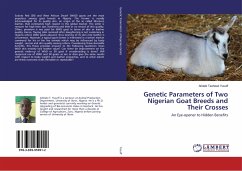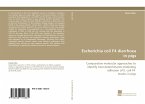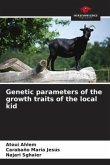Litter size is one of the most important traits in overall reproductive efficiency of breeding sows. The triat has low heritability, is measured only in females and is expressed relatively late. Genetic improvement for litter size is possible due to large enough direct additive genetic variance, the availability of records on many relatives and short generation interval. Litter size is affected by many environmental and genetic factors and interaction between them. The goal of this study was to determine covariance functions for litter size i.e. number of piglets born alive using random regression model. Further, the aim was to compare it with estimates of genetic components obtained by using repeatability and multiple-trait model.
Bitte wählen Sie Ihr Anliegen aus.
Rechnungen
Retourenschein anfordern
Bestellstatus
Storno








